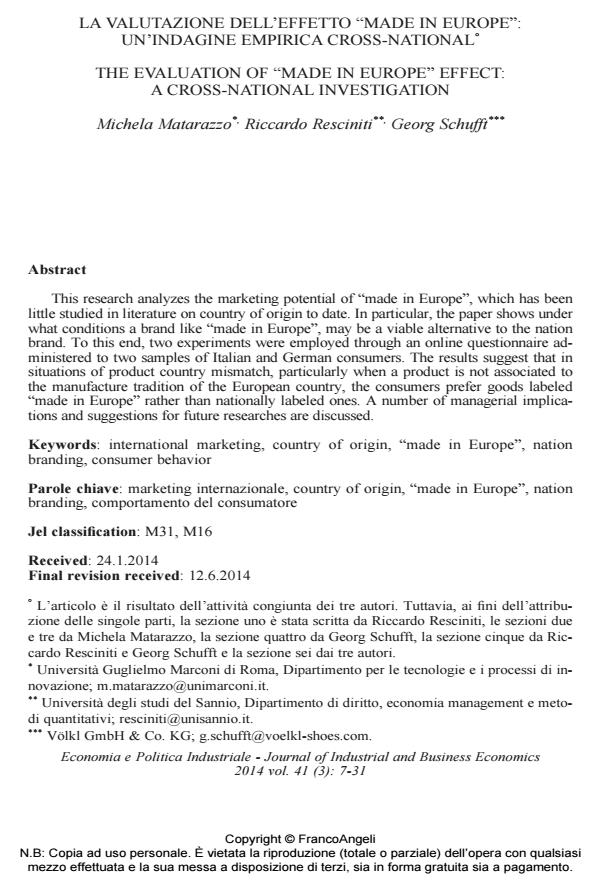La valutazione dell’effetto "made in Europe": un’indagine empirica cross-national
Journal title ECONOMIA E POLITICA INDUSTRIALE
Author/s Michela Matarazzo, Riccardo Resciniti, Georg Schufft
Publishing Year 2014 Issue 2014/3
Language Italian Pages 25 P. 7-31 File size 97 KB
DOI 10.3280/POLI2014-003001
DOI is like a bar code for intellectual property: to have more infomation
click here
Below, you can see the article first page
If you want to buy this article in PDF format, you can do it, following the instructions to buy download credits

FrancoAngeli is member of Publishers International Linking Association, Inc (PILA), a not-for-profit association which run the CrossRef service enabling links to and from online scholarly content.
This research analyzes the marketing potential of "made in Europe", which has been little studied in literature on country of origin to date. In particular, the paper shows under what conditions a brand like "made in Europe", may be a viable alternative to the nation brand. To this end, two experiments were employed through an online questionnaire administered to two samples of Italian and German consumers. The results suggest that in situations of product country mismatch, particularly when a product is not associated to the manufacture tradition of the European country, the consumers prefer goods labeled "made in Europe" rather than nationally labeled ones. A number of managerial implications and suggestions for future researches are discussed.
Keywords: International marketing, country of origin, "made in Europe", nation branding, consumer behavior
Jel codes: M31, M16
Michela Matarazzo, Riccardo Resciniti, Georg Schufft, La valutazione dell’effetto "made in Europe": un’indagine empirica cross-national in "ECONOMIA E POLITICA INDUSTRIALE " 3/2014, pp 7-31, DOI: 10.3280/POLI2014-003001